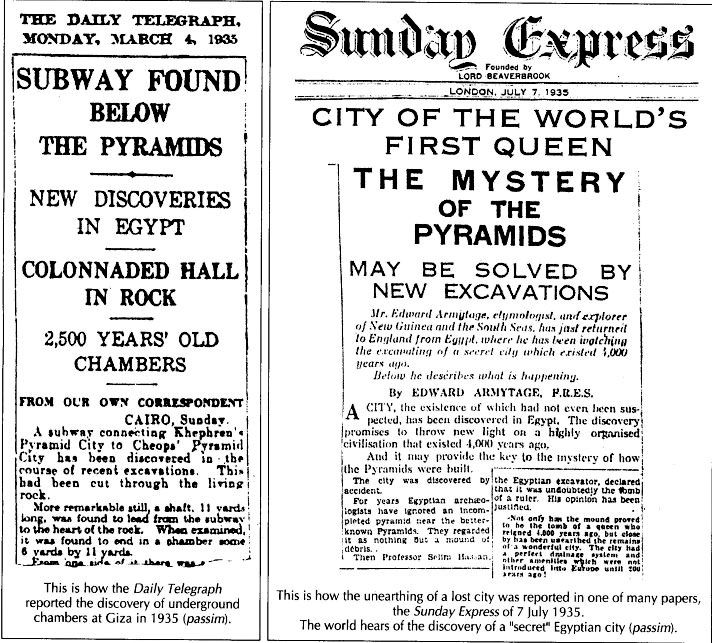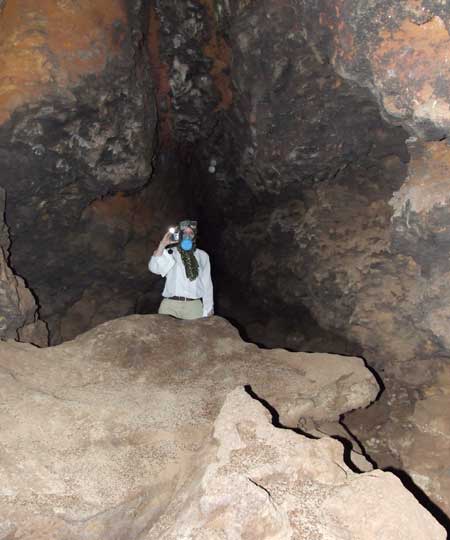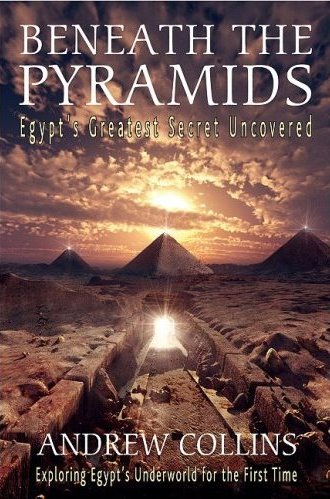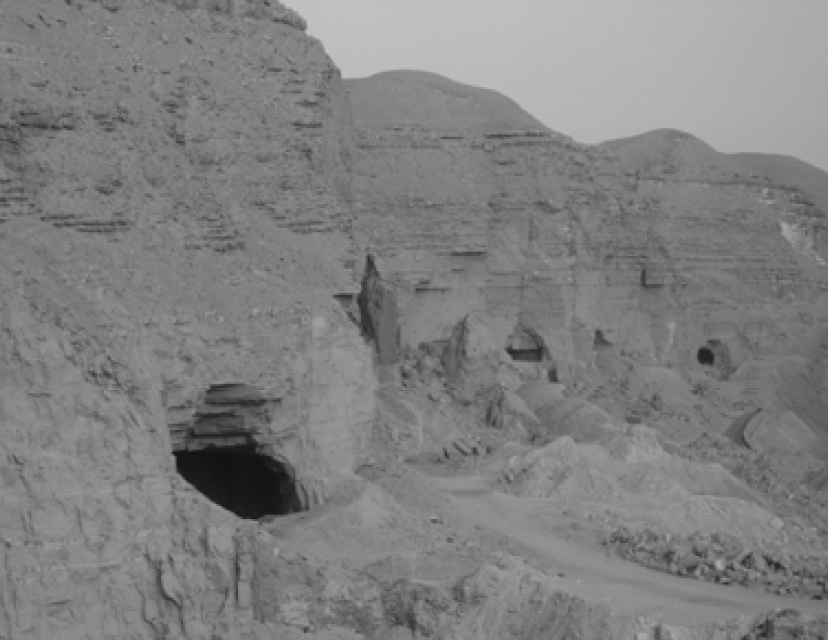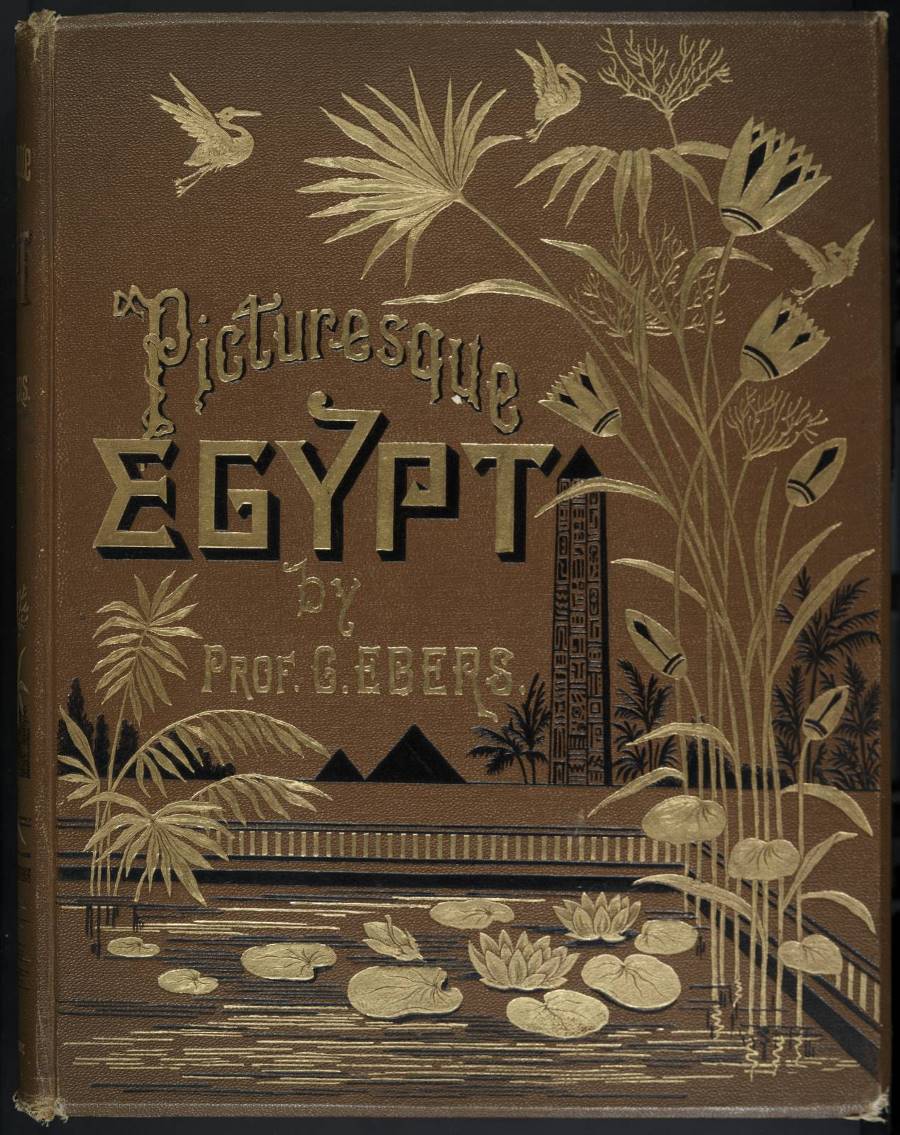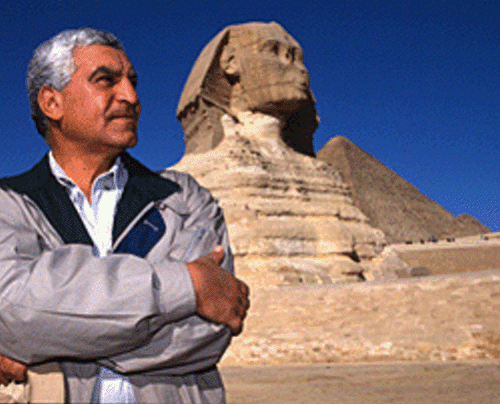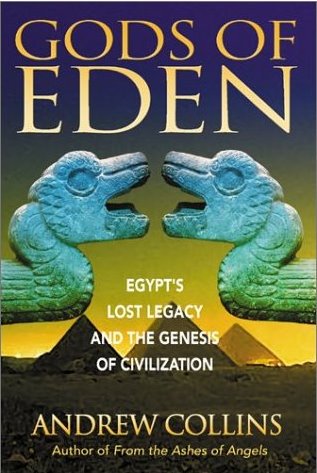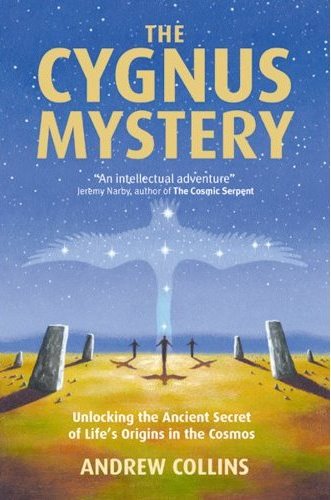|
Secrets of the Great Pyramids |
|
|
March 4, 1935 ..
The world hears of the discovery of a "secret" Egyptian city (1935) SOURCE: The Lost History of the Pyramids |
|
| Gaius Plinius
Secundus (AD 23
– August 25, 79)
better known as Pliny the Elder, in his book Natural History wrote: In front of them [i.e. The Giza Pyramids] is the Sphinx, which deserves to be described even more than they, and yet the Egyptians have passed it over in silence. The inhabitants of the region regard it as a deity. They are of the opinion that a King Harmais is buried inside it... [Book 36 XVII]There are two English translations of Pliny online: one complete, by John Bostock and H. T. Riley (1855) at Perseus; the other, of a sizable portion, by Philemon Holland (1601), slowly progressing on James Eason's site... - Bill Thayer |
|
|
Cave Complex Allegedly Found Under Giza Pyramid August 13, 2009 ..
Caves at Giza An explorer is photographed inside tunnels that were allegedly found beneath the Pyramids of Giza Cave Complex
Allegedly Found
Under Giza Pyramid
Aug. 13, 2009 -- An enormous system of caves, chambers and tunnels lies hidden beneath the Pyramids of Giza, according to a British explorer who claims to have found the lost underworld of the pharaohs. Populated by bats and venomous spiders, the underground complex was found in the limestone bedrock beneath the pyramid field at Giza. "There is untouched archaeology down there, as well as a delicate ecosystem that includes colonies of bats and a species of spider which we have tentatively identified as the white widow," British explorer Andrew Collins said. Collins, who will detail his findings in the book "Beneath the Pyramids" to be published in September, tracked down the entrance to the mysterious underworld after reading the forgotten memoirs of a 19th century diplomat and explorer. "In his memoirs, British consul general Henry Salt recounts how he investigated an underground system of 'catacombs' at Giza in 1817 in the company of Italian explorer Giovanni Caviglia," Collins said. The document records that the two explored the caves for a distance of "several hundred yards," coming upon four large chambers from which stretched further cave passageways. With the help of British Egyptologist Nigel Skinner-Simpson, Collins reconstructed Salt's exploration on the plateau, eventually locating the entrance to the lost catacombs in an apparently unrecorded tomb west of the Great Pyramid. Indeed, the tomb featured a crack in the rock, which led into a massive natural cave. "We explored the caves before the air became too thin to continue. They are highly dangerous, with unseen pits and hollows, colonies of bats and venomous spiders," said Collins. According to Collins, the caves -- which are tens of thousands, if not hundreds of thousands of years old -- may have both inspired the development of the pyramid field and the ancient Egyptian's belief in an underworld. "Ancient funerary texts clearly allude to the existence of a subterranean world in the vicinity of the Giza pyramids," Collins told Discovery News. Indeed, Giza was known anciently as Rostau, meaning the "mouth of the passages." This is the same name as a region of the ancient Egyptian underworld known as the Duat. "The 'mouth of the passages' is unquestionably a reference to the entrance to a subterranean cave world, one long rumored to exist beneath the plateau," Collins told Discovery News. Collins' claim is expected to cause a stir in the Egyptological world. Zahi Hawass, chief of Egypt's Supreme Council of Antiquities, has dismissed the discovery. "There are no new discoveries to be made at Giza. We know everything about the plateau," he stated. But Collins remarks that after extensive research, he found no mention of the caves in modern times. "To the best of our knowledge nothing has ever been written or recorded about these caves since Salt’s explorations. If Hawass does have any report related to these caves, we have yet to see it," Collins said. |
|
|
..
by Andrew Collins Introduction: Beneath the pyramids of Egypt lies a lost underworld of catacombs, hewn chambers, and cave tunnels. They are alluded to in ancient texts and Arab legends, but have been left unexplored until today. They have now been rediscovered and investigated for the first time by science and history writer Andrew Collins. What exactly does this subterranean realm tell us about the pyramids, their relationship to the stars, and the mythical origins of Egyptian civilization? Lavishly illustrated with color photos, this is a breathtaking personal journey of exploration and discovery. About the Author Andrew Collins was raised in the Essex town of Wickford. As a teenager, he became a UFO investigator. In 1977, he investigated the first-ever missing time abduction case reported in the UK, and that investigation changed his life. He became a journalist with the magazine Strange Phenomena and openly sought the help of psychics in an attempt to better understand the relationship between UFOs, prehistoric sites, earth energies, and the human mind. As a science and history writer, he has authored a variety of books that challenge the way we perceive the past, including his best-selling The Cygnus Mystery, that delves into how ancient monuments and temples, that are still standing today, were built with an orientation towards Cygnus. Collins latest titles, The New Circlemakers and Beneath the Pyramids, were both published by 4th Dimension Press, an A.R.E. Press imprint, in 2009. Collins continues to speak and travel throughout the U.S. while living in the heart of crop circle country, near Marlborough, Wiltshire, with this wife Sue. SOURCE: Amazon.com Beneath the Pyramids: Egypt's Greatest Secret Uncovered |
|
|
Safe Blasting Near the Historical Caves of Tourah Cairo, Egypt ..
Caves at Tourah, Cairo, Egypt INTRODUCTION: There are four large cement factories, located nearby Cairo metropolitan. Blasting operations are used to extract the limestone from their quarries for cement industries. All the quarries have to keep the blast vibrations under control. The oldest quarry of these is TPCC limestone quarry owned by Italcementi Group, which lies near to some historical caves, within Tourah Mountain as shown in Figure (1) above. Some previous blasting produced high PPV values, upsetting the local authorities, which express concern about caves stability during the future blasting. In 2005 TPCC recognized the need for advanced drilling and blasting. They elected ASEC Company for Mining "ASCOM" as a company that specializes in quarry management throughout Egypt and Middle East. ASEC Company
for Mining "ASCOM",
Egypt
Experimental Techniques To Reduce Blast Vibration Level, Tourah, Cairo, Egypt. Location and
site geology
Experimental Techniques To Reduce Blast Vibration Level, Tourah, Cairo, Egypt. - [PDF][Archived] |
|
|
Caves Beneath the Pyramids ..
We may now descend, not wholly without difficulties it is true, and we will visit the best preserved of the tombs which stand up from the sand-drifts in regular rows, or contemplate the caves in the rock which open in from the face of the limestone plateau on which the Pyramids stand; thus we shall get an idea of the times of Chefren and his successor which will rescue them completely and for all time from the ignominious and odious character given them by Herodotus. While the Pyramids themselves bear no inscriptions, the inner chambers of all the tombs of the great of that early period are completely covered with pictures and hieroglyphics. SOURCE: 1911 - Page 133
VOL. I.
http://scholarship.rice.edu/jsp/xml/1911/19582/1305/EbePict.tei-timea.html |
|
| Journal of Cave
and Karst Studies
- ISSN 1090-6924
Volume 67 Number 3: 174-181 - December 2005 A publication of the National Speleological Society Imaging subsurface cavities using
geoelectric tomography
and ground-penetrating radar
Abstract In the past few years, construction extended extraordinarily to the southeast of Cairo, Egypt, where limestone caves occur. The existence of caves and sinkholes represents a hazard for such new urban areas. Therefore, it is important to know the size, position, and depth of natural voids and cavities before building or reconstruction. Recently, cavity imaging using geophysical surveys has become common. In this paper, both geoelectric-resistivity tomography using a dipole-dipole array and ground-penetrating radar (GPR) have been applied to the east of Kattamya at Al-Amal Town, Cairo, to image shallow subsurface cavities. The state is planning to construct a new housing development there. The resistivity survey was conducted along three profiles over an exposed cave with unknown extensions. The radar survey was conducted over an area of 1040 m², and both sets of data were processed and interpreted integrally to image the cave as well as the shallow subsurface structure of the site. As a result, the cave at a depth of about 2 m and a width of about 4 m was detected using the geophysical data, which correlates with the -known cave system. Moreover, an extension of the detected cave has been inferred. The survey revealed that the area is also affected by vertical and nearly vertical linear fractures. Additionally, zones of marl and fractured limestone and some karstic features were mapped. This page last updated: 20 January,
2006 9:36
SOURCE: caves.org/pub/journal/PDF/V67/v67n3-El-Qady Imaging subsurface cavities using geoelectric tomography and ground-penetrating radar - [PDF][Archived] |
|
| Use of Remote
Sensing Techniques
for Geomorphological Study of Some Sites for
Ecotourism in Farafra Area,
Western Desert, Egypt
Salient Geomorphological Features Caves, Sinkholes, and Karst Topography Caves sinkholes, and karst
topography are naturally
formed underground chambers. Most caves develop when
slightly acidic ground
water dissolves limestone along joints and bedding
planes, opening up cavern
system as calcite
Conclusions The Eocene plateau in the Western Desert of Egypt had been retreeted in its western side. Some of the geomorphological features such as caves and others of ecotourism interset are located in this reteeted remenant hills as a result of the karst processes from the Eocene to the present day. Paleotopography, paleoclimate, lithology of the host rocks and the tectonic evolution and related structural elements, are the main fundamental factors that controlled the formation, distribution and evolution of the karst features. However, the lithology is presents the main effecting factor. Karren are best developed on relatively massive uniform mechanically strong and impermeable limestones in which there is a sharp contact between soil and rock. Chalk, for instance, is too porous and mechanically weak for karren development. Climate is also important since adequate moisture must be present for effective solution. In the present area of arid climate there is generally insufficient surface water, whereas in periglacial regimes frost action may be so effective that solutional forms have little time to develop. Water table be favourable environments for karren development. Time is the final significant factor since karren developed under a relatively humid climate may survive for a period after a change to a more arid climatic regime. Moreover, forms developed under a soil cover may subsequently be exposed by erosion, in some cases promoted by human activities. The karst processes for the long time in wide areas of the Eocene plateau produce several generations of karst forms such as; mature caves with various types of stalactite and stalagmite such as that of the Dajara cave, caves of the north of Farafra Depression, collapsed caves in the “The Gabal Crystal “ arta and the karst forms which show that karstification played a major role in the geomorphology of wide areas. The tectonic evolution and related structural elements are the main fundamental factors that controlled the formation, distribution and evolution of the karst landforms and the composition and textures of the associated karst products. The resulted. karst landforms are differentiated into: a) mature and degraded conekarst;Solution depressions of variable, dimension (sinkholes, dolines and poljes) and morphogenetic karren forms are widely distributed in the plain surfaces. Farafra Depression is one of large polje, formed due to the coalescence of solution dolines and degradation of tower karst system. Partially or completely filled small and large-scale subsurface cavern levels, potholes and channels are commonly developed along vertical joints and bedding planes. The analyses; of these features indicate multicycles of karstification involving continuous lowering of the landscape in paleotopography and variable paleoclimate carbonate host rocks in north Farafra Oasis area Egypt. J. Remote Sensing & Space Sci., V.11, PP, 155-172 (2008) |
|
|
..
Pyramids and
New Agers
The secrets of the Pyramids continue to tantalise. Missions from Japan, France and the United States have used radar to explore the shafts inside the Pyramids of Giza, arousing the interest of New Age theories. Attempts are being made to discover secret chambers that they believe contain information about a so-called lost civilisation. Most of these New Age expeditions have tended to jump to conclusions based more on fantasy than on fact. When a crack appears on the computer screen they take it to be a hollow in the rock, and, consequently a secret room. For example, back in 1977 Stanford Research Institute claimed that radar showed evidence of a room under the right paw of the Sphinx. At that time the Permanent Committee of the Supreme Council of Antiquities (PCSCA) gave them permission to drill, but nothing at all was found. Following this experience, the PCSCA insisted that solid evidence had to be provided before anyone would be allowed to drill near the Sphinx again. In 1996 Florida State University again used radar to carry out investigations around the Sphinx and the eastern side of the Great Pyramid of Khufu. Their results showed a hollow beneath the Sphinx which, they claimed, was a large tunnel extending from the third subsidiary Pyramid of Queen Henutsen to the Great Pyramid. They sent a report to the PCSCA and said that they wished to drill near the Sphinx and also near the Queen's Pyramid, near the Great Pyramid of Khufu, to authenticate their claim. The PCSCA responded that they should first prove that their radar test was accurate by drilling outside the Great Pyramid, since they did not want to put the Sphinx at risk unless convinced of the plausibility of their theory. Using sophisticated advances in technology, a scientist from Florida State University again said that he was sure that there was a tunnel on the east side of the Great Pyramid. This time we appointed a scientist to assist in their work. I am sure that there is no evidence at all to indicate that this area of the Great Pyramid contains tunnels. I put so little stock in their theory that I even forgot that they were drilling. A few weeks later, the inspector who was accompanying them came to tell me they had found nothing. I was not surprised. The expedition had let its imagination run away with it. The area they were drilling was solid rock, part of the Muqattam formation, so why would there be a tunnel there? They had come to believe a myth which, scientifically, did not make sense. The first and second levels of the bedrock at Giza is very weak and contain natural cracks. The upper level is only good quality limestone. Therefore I believe that most of the anomalies that appear on radar are actually natural cracks in the rock. In 1986, a French team came to work at Giza. They wanted to drill in the west wall of the corridor leading to the so-called Queen's Chamber. They received permission and drilled, but found nothing. However, they did create a lot of publicity and even had a photograph in a French magazine bearing the headline: "We are the ones who drilled inside the Pyramid." Had these people been affiliated to an authorised institution they would never have done that; they were amateurs and I do not understand how they obtained permission to drill since, according to the Antiquities Law, no one can work on any monument in Egypt unless affiliated to a recognised university or museum. The same group came back to work inside the Pyramids of Khufu and Khafre, and I wrote objecting to their work. They gave the PCSCA a report claiming there was a hidden chamber under the Queen's Chamber inside the Great Pyramid of Khufu, and asked for permission to drill. I studied their report, took a scientist along with me and entered the Pyramid to see if there was any justification for their claim. I ascertained that the idea was based on theory without any accurate or scientific evidence to support it. I even took their report and gave it to two scholars who specialised in Pyramids, and they agreed that the theory was nonsense. I want to re-emphasise that we can only permit authorised scholars to make holes in the Pyramids, and only they should be able to provide concrete evidence to support their theories. We cannot allow people to drill in these magnificent structures for purposes of publicity. After the report was issued, two things happened. An Egyptologist with no experience in the field of Pyramids started to support the amateur group and, with the help of media propaganda, articles began to appear in newspapers around the world stating that a secret room had been found inside the Great Pyramid. The head of a French newspaper explained the discovery of the "secret room" under the so-called Queen's Chamber. And so the rumours spread, the myth gains momentum, while the mystery of the Pyramids remains unsolved. © Copyright Al-Ahram Weekly. All rights reserved SOURCE: Al-Ahram Weekly |
|
Related Links:
|
|
|
The Forbidden Legacy of a Fallen Race ..
by Andrew Collins |
|
|
Egypt's Lost Legacy and the Genesis of Civilization ..
by Andrew Collins |
|
|
Unlocking the Ancient Secret of Life's Origins in the Cosmos ..
by Andrew Collins |
|
|
The Search for the Source of a Lost Civilization ..
by Andrew Collins |
|
| FAIR USE NOTICE: This page contains copyrighted material the use of which has not been specifically authorized by the copyright owner. Pegasus Research Consortium distributes this material without profit to those who have expressed a prior interest in receiving the included information for research and educational purposes. We believe this constitutes a fair use of any such copyrighted material as provided for in 17 U.S.C § 107. If you wish to use copyrighted material from this site for purposes of your own that go beyond fair use, you must obtain permission from the copyright owner. | |
|
|
